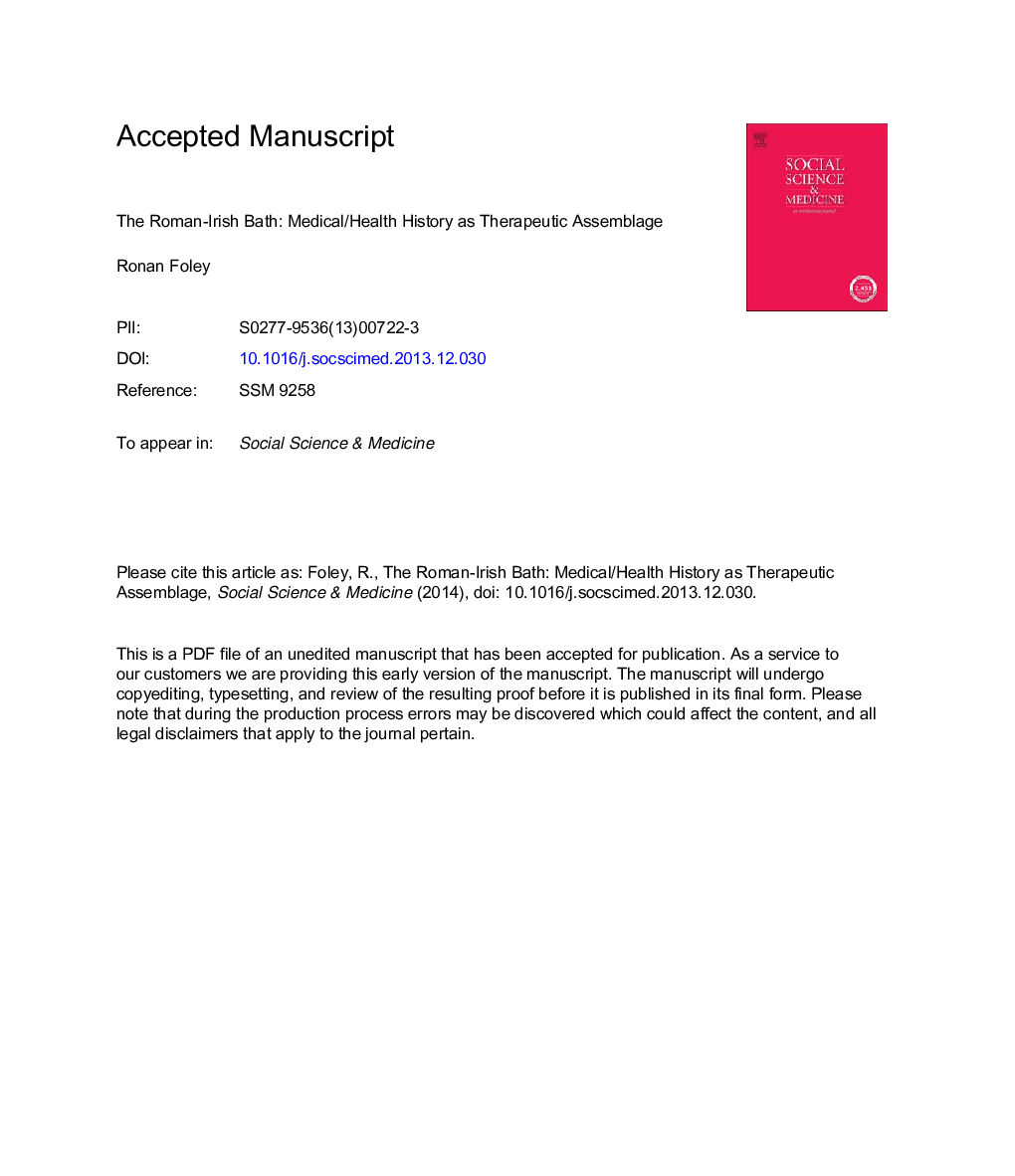| Article ID | Journal | Published Year | Pages | File Type |
|---|---|---|---|---|
| 7335462 | Social Science & Medicine | 2014 | 40 Pages |
Abstract
The invention of a new form of hot-air bath in Blarney, Ireland in 1856, variously known in its lifetime as the Roman-Irish or Turkish Bath, acted as the starting point for a the production of a globalised therapeutic landscape. Tracking the diffusion of the Roman-Irish bath template from its local invention in Ireland to a global reach across the Victorian world and recognizing its place within a wider hydrotherapeutic history, this paper frames that diffusion as a valuable empirical addition to assemblage theory. The specific empirical history of the spread of the Roman-Irish/Turkish bath idea is drawn from primary archival and secondary historical sources. It is then discussed and, drawing from work on assemblage theory, analyzed against three broad themes: mobile networks, socio-material practices and contested emergence. The emergent relational geographies of the Roman-Irish Bath identify important roles for the diffusion and transformation of specific medical settings, identities and functions. These were linked in turn to competing social-healing pathways wherein bodies were technologically and morally managed, to produce a more inhabited form of therapeutic assemblage. In all cases the differential diffusion of the bath idea, it's shifting and fractured material forms and multiple inhabitations and discourses were contested and mobile and spoke to an assemblage approach which has ripe potential for exploration across a range of medical/health geography settings.
Related Topics
Health Sciences
Medicine and Dentistry
Public Health and Health Policy
Authors
Ronan Foley,
